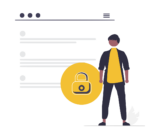Regardless of how tempting it might be to offload tasks to AI, ongoing human oversight is essential to confirm everything is running as expected.
Blog
Anatomy and Physiology of Pre-War Aikido
Rodrigo Kong (emergency room physician and martial artist) joins Noah Landow (Founder and CEO at Macktez) for a conversation about the interplay of anatomy, physiology, and the ancient Japanese art of Daito-Ryu Aikijujutsu.
The danger of insider threats
While some insider threats do originate from malicious or disgruntled employees, the vast majority of insider threats are likely the result of mistakes, inadequate training, or inadequate security practices.
Outlook.com enforces email security protocols
When enforcement of Microsoft’s new policies begins in May, non-compliant messages will be routed to users’ Junk folders, but will eventually be rejected.
Google Drive security best practices
Leveraging Google’s collaborative features without considering security opens your organization to vulnerability by giving access to the wrong people, or to the right people at the wrong time. Annual audits and policy reviews can help keep you safe.
Albinism Illuminated
Meredith Talusan (artist, journalist, and author) joins Noah Landow (Founder and CEO at Macktez) for a conversation about the widely known but poorly understood absence of bodily pigment known as albinism.
iOS 18 introduces significant BYOD security enhancements
iOS 18 now allows partial device management on employees personal devices, to secure corporate data while leaving personal data untouched and private.
Preparing to shop for or renew cybersecurity insurance policies
A Cybersecurity Assessment is like a health check for your systems, offering critical insight into areas of strength as well as highlighting items that may need to be improved.







